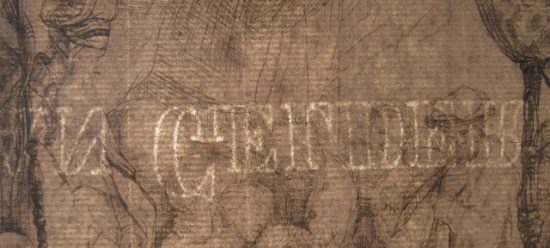When Masterworks Fine Art acquires a work of art, we undertake a program of research and identification. Old Masters prints, such as those by Rembrandt, require special attention because documentation can be limited, works often exist in multiple states, and posthumous prints made from plates still in existence are on the market.
When researching prints, we consider the image and sheet size, the type of paper on which the work is printed, and the watermark (if there is one).
A watermark is an image, design, or pattern in paper that appears as varied shades of lightness or darkness when viewed against light. Watermarks are caused by thickness or density variations within the paper. They are usually produced by impressing an image into the still-wet paper when it is being made. The location where the image is impressed will be thinner, allowing for the image to show through when the paper is held up to light or set against a dark background.
As methodical studies of watermarks found in the graphic work of specific artists appear, the identification of these marks becomes increasingly valuable. It is a rare day when we uncover a full watermark on a newly acquired print. Finding even the tip of a crown or a partial cluster of grapes enables us to match that fragment to a documented watermark. If we can nail down what paper the work is on, we can at least be certain that the impression was not pulled before a certain date.
Information obtained through a watermark about a paper’s country of origin, dates of manufacture, and import history can narrow the time frame for an impression and authenticate the work. However, sometimes our search for a water mark leaves us empty-handed, and we turn to determining the state of the print.
Not all works will have a watermark. The watermark would likely be impressed on a certain area or section of a sheet of paper. One sheet might be cut down to produce multiple prints. In this case, a variety of options exist: only one print produced from the sheet might show the entire watermark while other prints will not have a watermark at all or multiple prints produced from the sheet might show different portions of the watermark. It all depends on where the sheet of paper was divided.
NOTE: Watermarks do not only apply to Old Master works. They can also be used to help identify modern and contemporary works on paper. For instance, if we know that an original Chagall lithograph was printed on Arches wove paper, we can turn to the watermark (amidst other factors) to verify authenticity.

